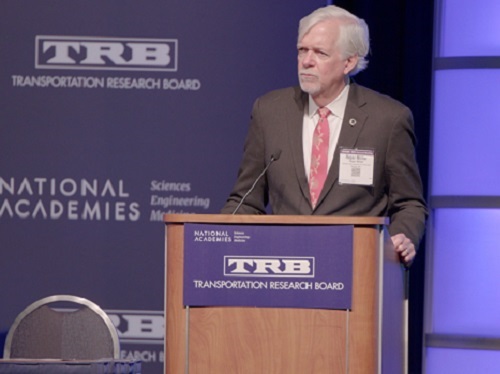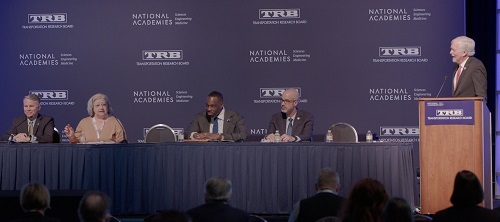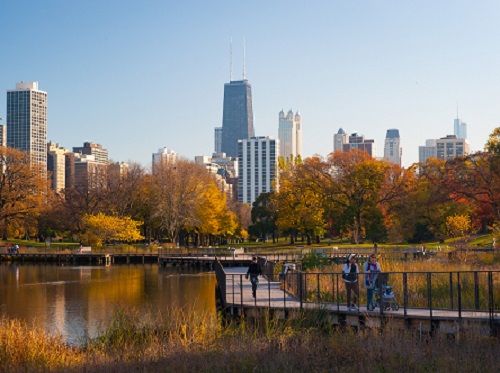FEDERAL ACTION
State DOTs Discuss ‘National Vision’ for Transportation – AASHTO Journal
Federal climate forecasts could help prepare for extreme rain. But it’s years away – NPR’s Morning Edition
Biden-Harris Administration Releases First-Ever Blueprint to Decarbonize America’s Transportation Sector – USDOT (media release)
FTA Announces Approximately $20 Million Funding Opportunity to Help Communities Prosper Through Access to Transit – FTA (media release)
COVID-19
Federal COVID Aid to be Allowed for Disaster Infrastructure Use – AP
INFRASTRUCTURE RESILIENCE AND SUSTAINABILITY
I-24 Motion Project with Lee Smith and Dr. Dan Work – AASHTO’s ETAP Podcast
Michigan chief mobility officer: ‘States need to write the playbook’ on EV charging – Smart Cities Dive
Lawmakers look to shape future of electric vehicle charging in North Dakota – Forum News Service
E-Bikes and the Bike Infrastructure of the Future – Planetizen
AIR QUALITY
Virginia Governor Wants To Cut Ties With California’s Electric Vehicle Plan – WJLA-TV
NYU researchers confirm ‘river-tunnel effect’ where air quality degrades in subway stations near river crossings – Mass Transit
Children living near airports may be exposed to high levels of lead: study – The Hill
U.S. Carbon Emissions Grew in 2022 – New York Times
Jersey City Joins Global Pledge to Reduce Emissions – City of Jersey City (media release)
ENVIRONMENTAL JUSTICE
Urban flooding research focused on climate equity in southeast Michigan – MLive
Taking Aim at Climate Injustice: US Focuses on Environmental Racism in 2023 – CNET
Achieving Equitable Mobility – Mass Transit (commentary)
NATURAL RESOURCES
Montana DOT Proposes Fences, Gates, Warning Signs To Curb Wildlife Deaths Caused By Vehicle Crashes – Nature World News
MoDOT volunteer shortage leads to trash build-up on I-70 – KTVI-TV
Your Questions Answered: Managing invasive plants in Florida’s natural areas – Southwest Florida Water Management District
A new bipartisan group of Texas lawmakers wants to highlight the state’s fragile water infrastructure – The Texas Tribune
California’s dilemma: How do you harness an epic amount of rain in a water-scarce state? Let it flood, scientists say – CNN
CULTURAL RESOURCES
SEPTA working to bring historic trolley rides back to Philly – KYW-TV
Bringing a Guitar to a Highway Fight – CityLab
PSU artists and transportation researchers team up on new comic book – BikePortland
HEALTH AND HUMAN ENVIRONMENT/ACTIVE TRANSPORTATION
TxDOT investing $250 million in bicycle and pedestrian programs – KETK-TV
Electric scooters and bikes could soon return to downtown St. Louis – KSDK-TV
Newtown Rail Trail Chugs Ahead With $2.5M In Grants For Bucks County – Newtown Patch
Feasibility study underway for Washington-Greenville greenway in North Carolina – WITN-TV
TRB RESOURCES/ANNOUNCEMENTS
Assisted Resettlement and Community Viability on Louisiana’s Gulf Coast: Proceedings of a Workshop – National Academies of Sciences, Engineering, and Medicine
Smart Mobility Connection Webinar: Uber & Lyft in U.S. Cities: Findings and Recommendations – Mobility21, the National University Transportation Center for Improving Mobility (link to registration)
FEDERAL REGISTER NOTICES
Notice of Availability of Final Initial Updated Policy Guidance for the Capital Investment Grants Program – FTA (Notice)
Guidance on Development and Implementation of Railroad Capital Projects – FRA (Notice)
Partial Approval, Conditional Approval, and Partial Disapproval of Air Quality State Implementation Plans; Nevada; Infrastructure Requirements for Ozone – EPA (Proposed rule)
Designation of Areas for Air Quality Planning Purposes; California; Coachella Valley Ozone Nonattainment Area; Reclassification to Extreme – EPA (Proposed rule)
Approval and Promulgation of Air Quality Implementation Plan; Mohegan Tribe of Indians of Connecticut – EPA (Proposed rule)
Commercial Diving Operations – Coast Guard (Notice of proposed rulemaking; withdrawal)
Port Access Route Study: Approaches to Maine, New Hampshire, and Massachusetts – Coast Guard (Notice of availability of draft report; extension of comment period)
Request for Nominations for Members To Serve on the National Volcano Early Warning System Advisory Committee – Geological Survey (Request for Nominations)



